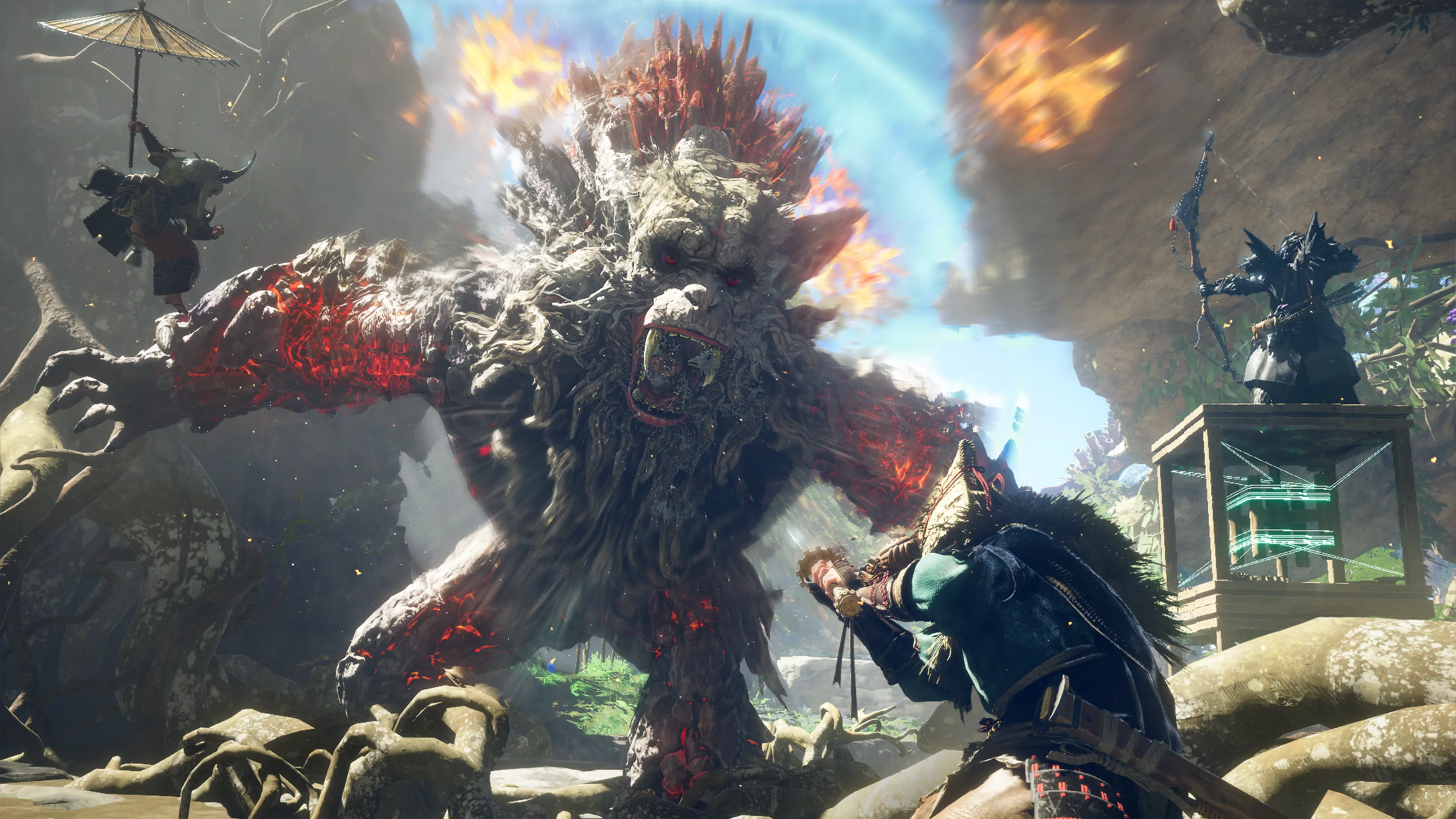Wild Hearts, as a concept, isn’t something we haven’t seen before. It would be remiss of me to not address the monster in the room, which is Capcom’s “Monster Hunter” series. But while Wild Hearts does share quite a lot with the popular monster-hunting franchise, it’s unique and refreshing enough to stand out as a unique, individual experience. There will still be quite a few mentions of MonHun, as both games are incredibly similar, but we’ll stick to Wild Hearts first and foremost, including what makes it good (and bad).
And though Wild Hearts isn’t a game that puts a huge focus on its story, we’ll be keeping this review relatively spoiler-free. There will be mentions of how certain weapons work, but nothing related to the actual plot of Wild Hearts.
Tame a World Gone Wild
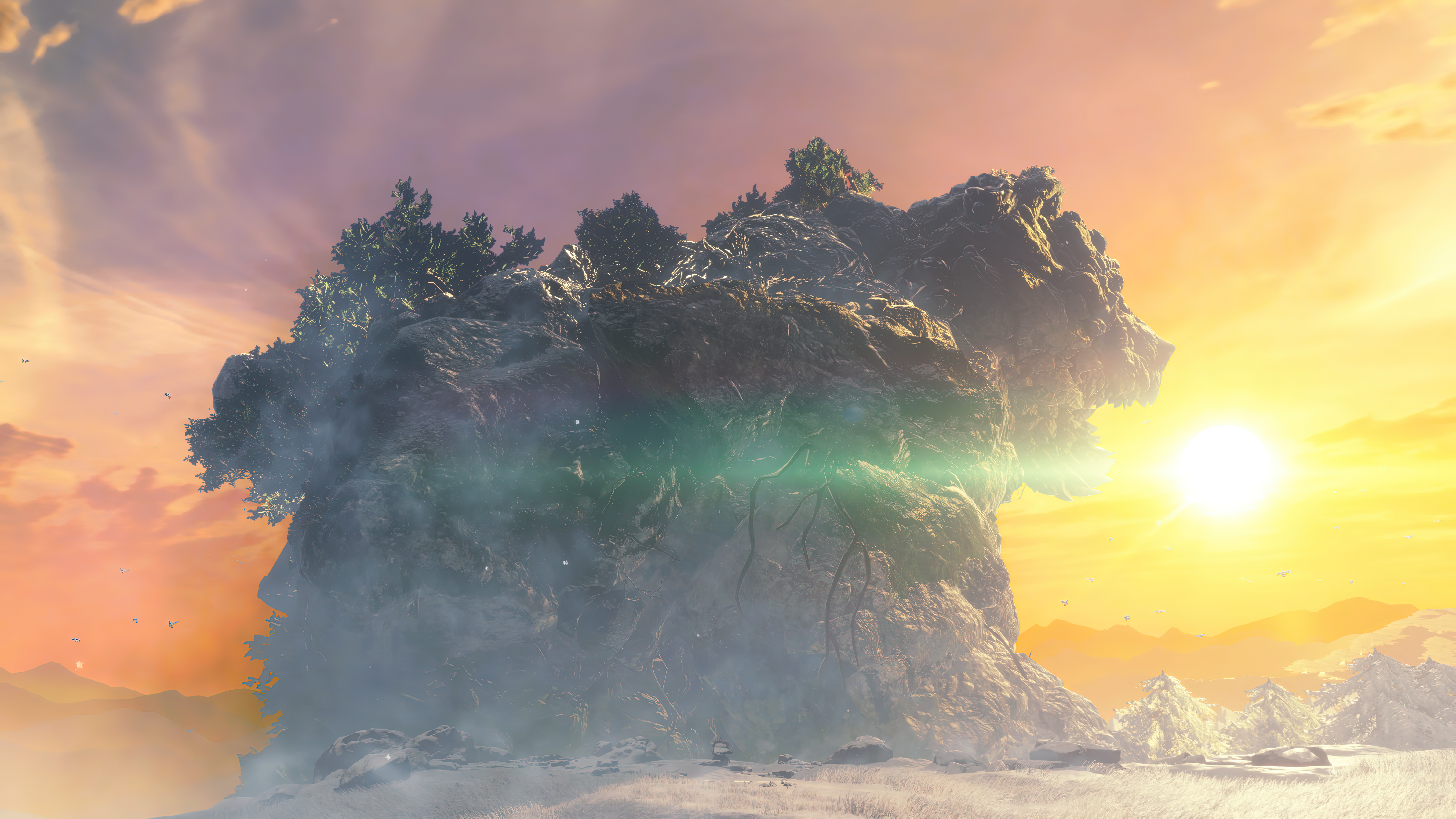
Wild Hearts involves the story of a hunter who comes across the ancient power of karakuri, which allows them to manifest various contraptions in order to take down kemono, wild beasts that have taken over the land of Azuma. As you hunt more kemono and upgrade your weapons, you’ll eventually explore more and more of the region, reporting back to the city of Minato every now and then.
When it comes to building a mythical world full of Wild Hearts, Omega Force did a somewhat great job of setting the right stage. The starting area looks wild and vibrant, and better yet, you can make them your very own hunting grounds by constructing karakuri to build bases, forge tools, and even zip your way across cliffs and hard-to-reach areas. Though your base-building capabilities are limited at first, you get to add more structures as you progress, and it was fun designing my own base of operations in the different zones.
Unfortunately, the same detail you get in the first zone doesn’t carry over to future zones you visit. Some of them seem like they lack details, and certain areas can feel a little too barren, even for a wild and uninhabited land. It looks like Omega Force put out all the stops for the first zone to leave a good impression, but didn’t have the time or resources to make the following areas as complex.
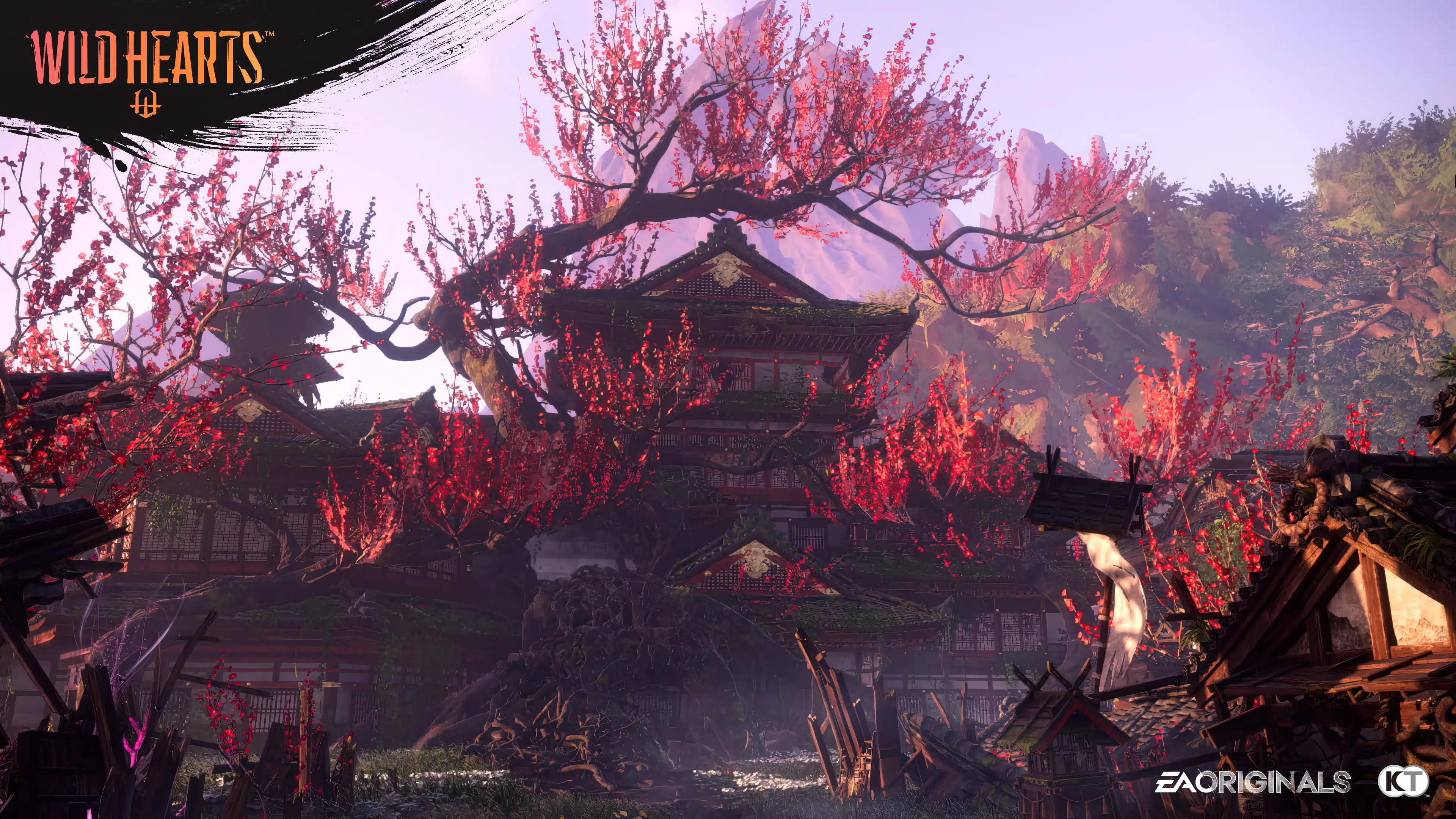
Sound design isn’t something that’s always talked about in games, but I’ve really gotta hand it to Omega Force with Wild Hearts. The sound effects that come from slashing your katana, smashing your maul, or shooting your bow feel satisfying, and they really sell hard-hitting moves with how impactful they sound. The soundtrack is also great, complementing the fights without actually taking center stage, as it should.
If I’m being nitpicky, the game does lack a bit of the immersive charm you’d get from a Monster Hunter game. There aren’t any cutscenes when crafting weapons (which I found fun to watch every now and then in Monster Hunter World) and no animations for gathering items. Sure, it saves you time, but the tiny details are what often really make the player feel like one with the world. The game puts a focus on combat, and that’s a good thing, but I just wished that they would have given the downtime aspects a little more love.
A Streamlined Hunting Experience
For all the praise that the Monster Hunter series gets, it’s not perfect, and arguably one of its biggest issues is that it’s a tad too complex for a player that’s new to the series to really get their hands dirty with. It can be difficult to wrap your head around combat, weapon sharpness management, consumables and item loadouts, crafting and gathering, ammo types… the list goes on. Sure, if you pour in enough time to really understand the game, you’ll be rewarded with a good experience, but that learning curve can seem a bit too steep to those who want to dip their toes into hunting games.
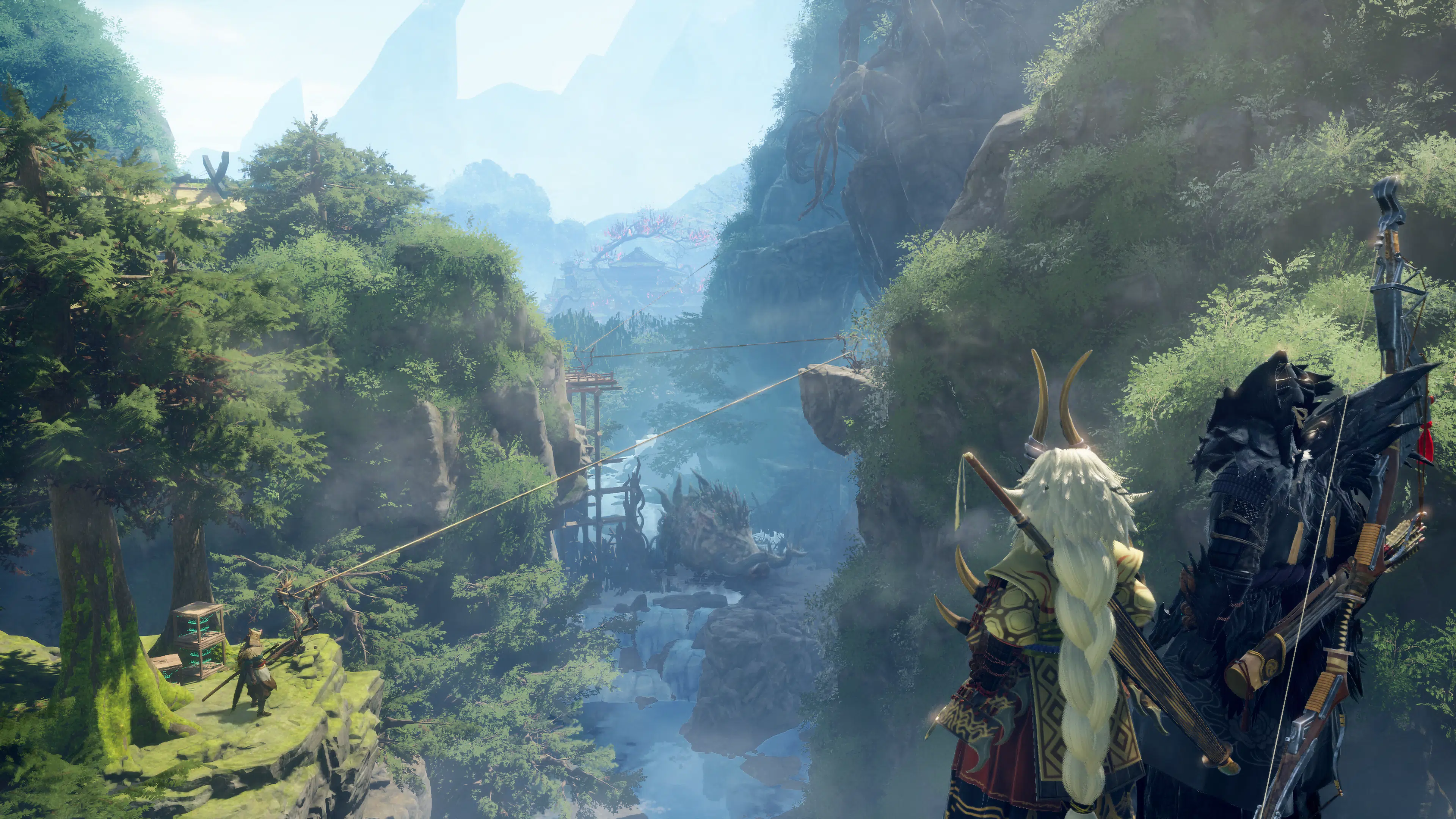
Wild Hearts does retain some degree of complexity to it, but the experience is somewhat more streamlined. Food lasts throughout a hunt instead of disappearing after you faint, you don’t need to sharpen your weapon between kemono fights, and you won’t have to spend time dedicated to gathering materials for your ammo. And while the game does have a food and crafting system, there are ways to somewhat automate them, with specific dragon karakuri that can gather materials for you while you’re out hunting.
Is this streamlined experience better? That’s a difficult question to answer, as there are players (me included) who enjoy the various aspects and systems of Monster Hunter. Still, I didn’t find it difficult to get used to the non-combat systems in Wild Hearts, and I bet other players will have a similarly smooth experience, too.
Tools of the Trade
Wild Hearts currently contains eight weapon types for players to wield and master, all with distinct playstyles. You start the game with five, and these include simple weapons like the katana, which you start with, and the bow, one of the game’s two ranged weapons. If you’re looking for something to put the time into mastering, the maul and bladed wagasa (a parasol with blades) both offer playstyles that reward careful combat and a proper understanding of the kemono you’re hunting.
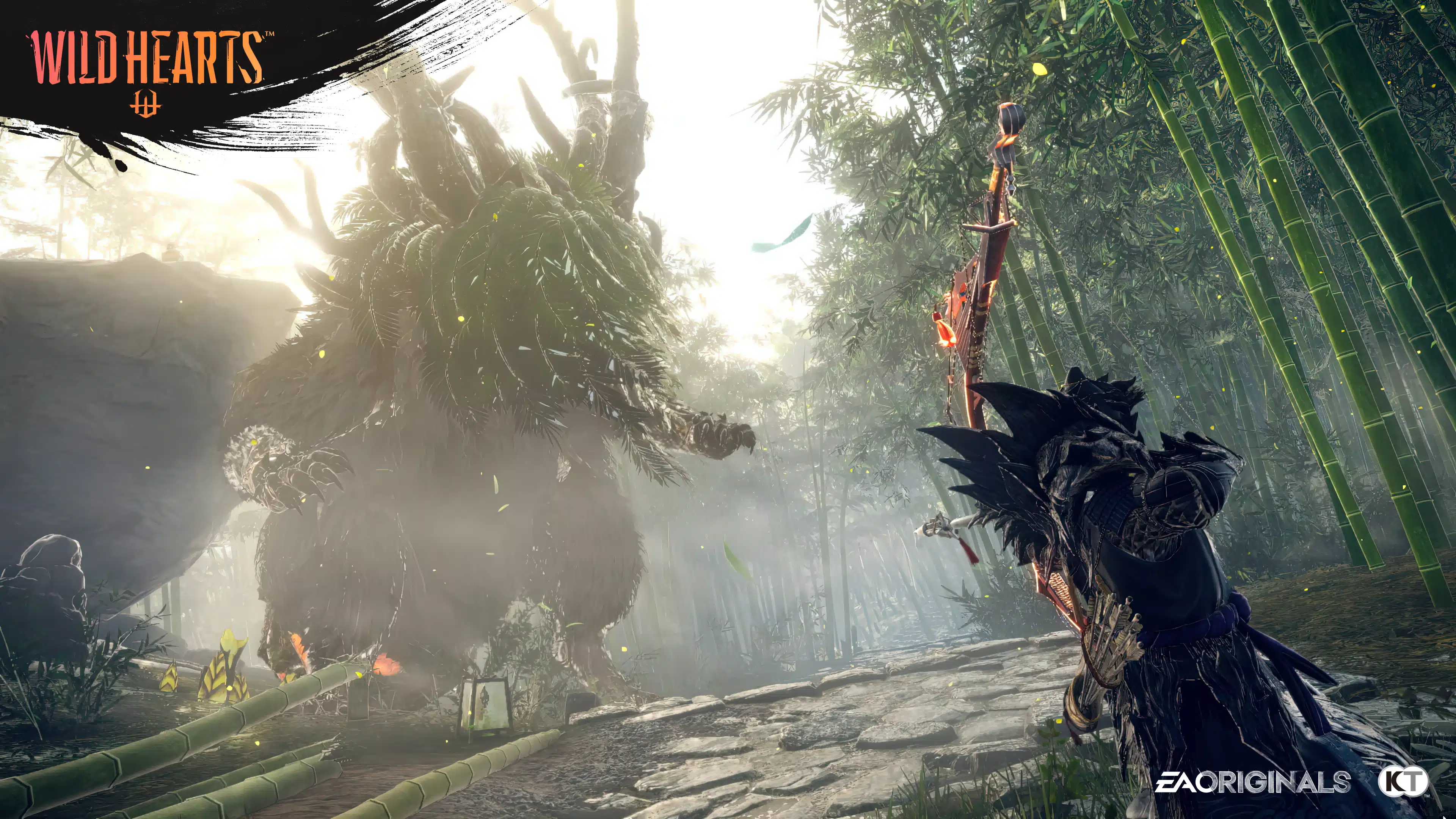
Like Monster Hunter, weapons largely define your playstyle while hunting, but there are a few design choices that make Wild Hearts’ selection slightly easier to work with, such as the fact that you don’t actually need to sharpen your weapons while in a hunt. One major aspect of Wild Hearts’ weapons is that they aren’t nearly as “clunky” to wield as their Monster Hunter counterparts. Of course, “clunky” is a subjective term, but you can’t deny the fact that combat in Monster Hunter is a lot less forgiving than it is in other action games. When you press a button to attack, you’re committing to that attack, and barring some exceptions, you just have to hope that the monster doesn’t have its jaws agape and rearing to bite.
- Related Reading: Wild Hearts Post Launch Support Includes Monthly Free Content Updates; Photo Mode Being Looked Into
Wild Hearts does have its fair share of “clunky” weapons, the nodachi and maul being good examples of this. But unlike the greatsword and hammer from Monster Hunter, you’re actually granted a few ways to stay mobile. The nodachi, for example, uses a charge system to gain power on your next swing, and though taking damage cancels the charge, you can move, dodge, and even attack while doing so, giving you more freedom to do what you want during a hunt. This is not to say that MonHun’s greatsword doesn’t have similar options, but the fact of the matter is that Wild Hearts’ nodachi just feels a lot more active and mobile by comparison.
And mobility comes in spades with Wild Hearts, no matter what weapon you use. The karakuri system gives you the ability to jump, leap, zip, and glide your way in and out of fights, so even if you’re using something as slow as the hand cannon, there are ways to stay on your toes throughout a fight.
The Art of Karakuri
Wild Hearts sets itself apart from other games in the hunting genre through its karakuri system, which allows players to construct all sorts of contraptions and structures during their hunts. These generally fall into two categories; the basic karakuri, which are simple devices that you can build mid-combat, and dragon karakuri, more advanced structures that require the local elements to construct. You can also transform basic karakuri into more powerful fusion karakuri by building them in a specific order or arrangement.
When you first step into the game, you likely won’t be using them all that much, as you can hunt the first couple of monsters without them giving you too much trouble. Once you start discovering more and more kemono, however, you’ll quickly learn that karakuri is instrumental in taking them down; the game even unlocks specific karakuri when fighting kemono that are weak against it.

The default controls for constructing karakuri can be a little tricky to get used to, but after a while, they’ll become a core component of your hunts. While I initially had doubts over how much it would take away from the actual gameplay of your weapons, the karakuri acts as more of a reliable support tool more than anything else, and that’s exactly what makes it so darn fun to use.
Hunting the Ferocious Kemono
The kemono are the monsters of Wild Hearts, and they’re definitely sights to behold. Their designs just scream traditional mythology, and their environment-altering capabilities really ground them in the world they inhabit. These creatures have the ability to transform the land to their will, and this manifests whenever they enrage. Visually, it’s quite the experience, and it really drives home the fact that you’re not just hunting some animal, but an actual mythical beast.
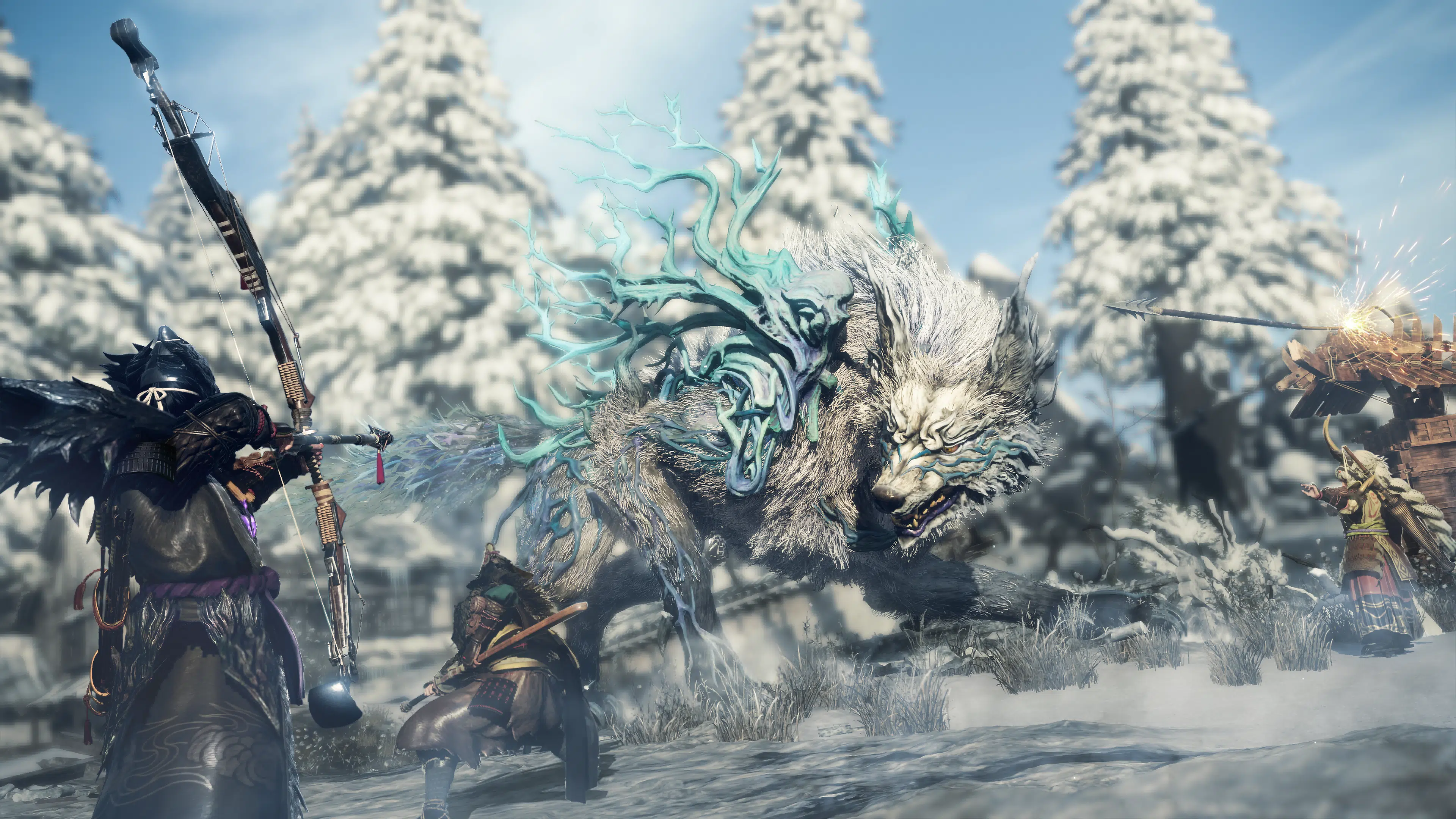
In terms of combat, each kemono fights differently, forcing you to learn their attack patterns and tells. Due to how varied these fighting patterns can be, you may find some kemono more troublesome with certain weapons than others, which I personally think makes the game feel less linear, as you’re incentivized to branch out and try other weapons depending on the situation. You can, of course, simply take down the kemono with whatever weapon you want through sheer skill, so you shouldn’t feel forced to switch weapons all the time, either.
Learning how a monster fights is what makes the hunting genre of games so exciting, and taking down a kemono for the first time will always feel exhilarating. Those who enjoyed playing Monster Hunter blind (that is, without guides or tutorials to assist you) should feel right at home in Wild Hearts, with fights that originally feel impossible with your current weapon turning into speedruns after enough hunting. Overall, you won’t feel disappointed with the kemono of Wild Hearts, especially after you use your finisher on one for the first time (gomen).
Disappointing Performance
Perhaps the biggest gripe I have with this game is its less-than-optimal performance metrics. This is a concern that’s been echoed by many PC players, and though it does run “better” on consoles, you can still experience hiccups.
I’ve personally had frame drops during my hunts even while running the game in Performance mode, which, mind you, sets the game’s resolution to 1080p. Getting dips in framerate even after sacrificing 4K feels like a slap to the face, which is a shame given the fact that everything else about this game deserves all the praise it gets.
Until Omega Force fixes the game’s performance issues (which will hopefully come soon), it will arguably remain a major dealbreaker for would-be players.
A Worthy Competitor
For the longest time, Monster Hunter has been the go-to monster-hunting franchise (sorry, Dauntless). It’s dominated the subgenre for quite a while, and though the recent titles in World and Rise are pretty good, the lack of competition means that there isn’t a whole lot of reason for the series to innovate.
With Wild Hearts entering the fray, however, things may just change. Its deep combat system and fun kemono hunts make for a solid hunting game alongside the unique and creative karakuri system. Its visual storytelling elements and sound design further add to the game’s mythical fantasy, resulting in an experience that you won’t find anywhere else among other monster-hunting titles.
The game is, in a word, solid, save for its glaring performance woes. It may very well be the “start of a saga” that Koei Tecmo hopes it to be, though we’ll have to see how well they handle the game’s post-launch support. Until then, Wild Hearts stands as the best title we currently have as competition in the monster-hunting subgenre, and a pretty good one at that.
Score: 8/10
Pros:
- Incredibly satisfying weapons and combat that offer various playstyles
- Beautiful sound effects and soundtrack that complement your hunts
- Lots of kemono variety with interesting and thrilling fights
- More streamlined and easier to get into for newbies
Cons:
- Visual detail and quality is somewhat inconsistent
- Terrible performance issues that can bog the game down at its best moments
- Misses some details that would otherwise make the game feel more immersive
Wild Hearts review code provided by the publisher. The game was tested on the PlayStation 5. You can read MP1st’s review and scoring policy right here.
